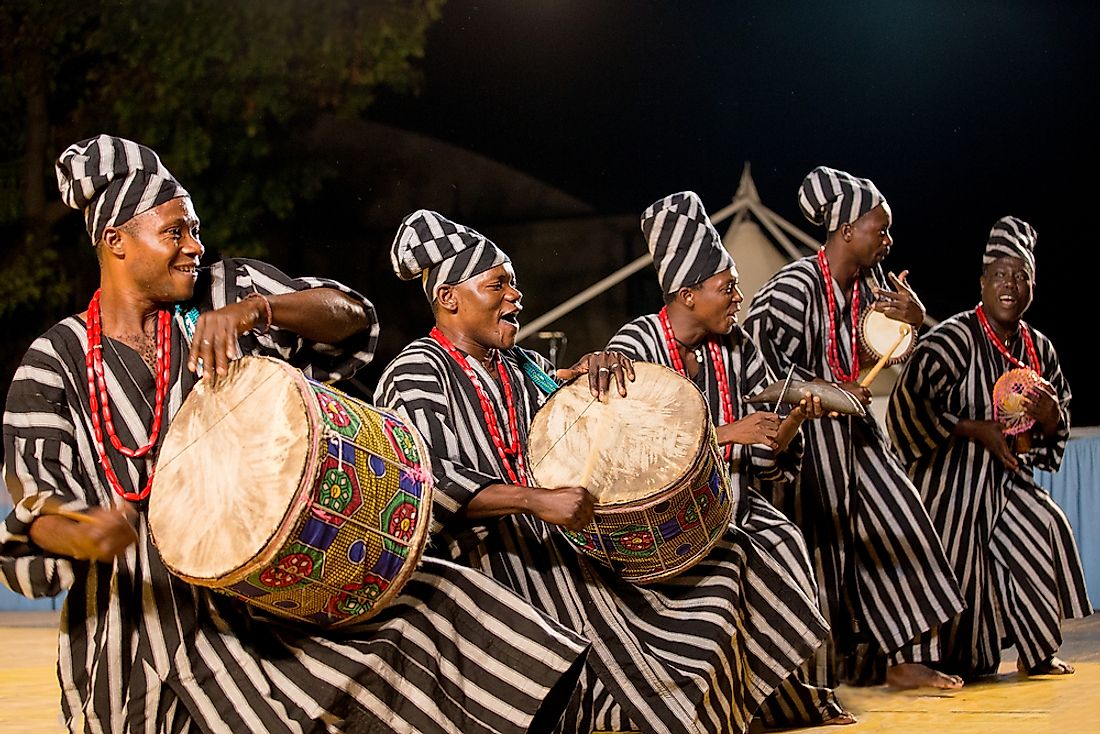Major Ethnic Groups Of Benin

The Republic of Benin is a country with diverse cultures and beliefs. After 1975, there was an introduction of a new government, the original name of the country Dahomey, name of the most respected Kingdom on the Slave Coast, was changed to Benin. The country is 112,622 square Kilometers and borders Nigeria, Togo, Burkina Faso, and Niger. Africans make up for 99% of the Benin population. The largest ethnic groups (Fon, Yoruba, and Adja) are culturally and socially related closely with a great division between people of the southern region and those of the Northern part of the country. With a life expectancy of 50 years, youths make up majority of the population.
Major Ethnic Groups Of Benin
Fon (Dahomey)
The largest ethnic group in Benin is Fon/Dahomey which constitutes 39% of the total population. Established in 1600 by the Fon, a group that came about through the intermarriage between the Adja and local Gedevi, the Dahomey ethnic group are the majority in the West Africa. After the successful handing power from the French dictators, a pluralistic ruling system was created making Benin the first country to attain freedom from colonial rule. The attaining of self-rule led to the Dahomey ethnic group dominating most of economic sectors in the country.
Yoruba
Coming from Nigeria and well settled along the eastern boundary of Benin is the Yoruba ethnic group. They are more than 18% of the population. The majority of the Yoruba people in Benin are descendants of the Ife tribe, and the Yoruba people are predominantly of the Muslim religion.
Adja
The Adja ethnic group is mostly farmers and lives in the southern part of Benin. They make up 15% of the general country population. This group of people migrated into Benin between the 12th and 13th centuries from River Mono. While maintaining their cultures and traditions, the Adja interacted with the local tribe leading to the creation of the Fon ethnic group. The primary language is Aja-Gbe with a majority of the people being trilingual.
Bariba
Dominating the northern side of Benin is the Bariba ethnic group who constitute 9% of the population. They are the first inhabitants of Benin and are concentrated in the capital city, Nikki. One of their leading practices is horse riding, which is a practice that has been enjoyed from generation to generation. With agriculture being their dominant occupation, Bariba people have a diverse range of produce such as corn, rice and palm oil. The experience of variations in temperatures on the northern side of the nation traverses into the savanna and Sahel regions. The primary religious practice is Islam with some of the communities being engraved in indigenous beliefs.
Diversity in Culture In Benin
There is no ethnic homogeneity in Benin, which was brought about by the high levels of waves of migration, commercial relations with Europe and competition that existed among the pre-colonial Kingdoms. The Fon and Yoruba are the largest of many ethnic groups in the West African nation of Benin. Most of the ethnic groups migrated and settled in Benin in different times and has not hindered the people from interacting with their unique cultures. The agriculture sector is the principle contributor to the vibrant and flourishing economy of the nation.
Major Ethnic Groups Of Benin
| Rank | Ethnic Group | Share of Population in Benin |
| 1 | Fon (Dahomey) | 39% |
| 2 | Yoruba | 18% |
| 3 | Adja | 15% |
| 4 | Bariba | 9% |
| 5 | Fula (Fulani) | 7% |
| 6 | Ottamari | 6% |
| 7 | Lukpa | 4% |
| 8 | Dendi (Songhai) | 3% |







